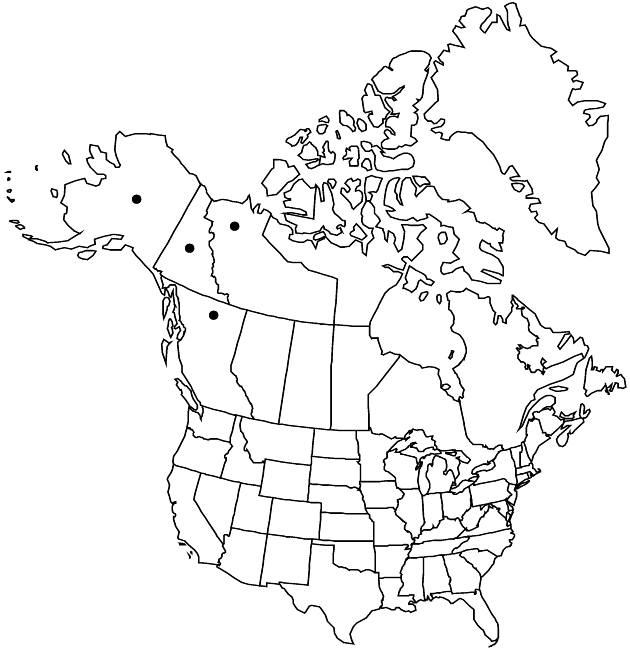Artemisia alaskana
in N. L. Britton et al., N. Amer. Fl. 34: 281. 1916.
Perennials or subshrubs, 15–30 (–60) cm (not cespitose), aromatic (caudices woody). Stems 1–10, erect, gray-green, simple (suffrutescent from woody offsets), densely hairy to glabrescent. Leaves basal and cauline, mostly gray-green; blades obovate, 1.5–5 × 0.5–1.5 cm, 3-lobed to 2-ternately lobed (lobes 0.5–3 mm wide, margins flat; cauline leaves smaller, sometimes entire), faces tomentose. Heads (peduncles 0 or to 30 mm) in (leafy) paniculiform to racemiform arrays 12–25 × 1–4.5 cm. Involucres broadly campanulate, 3.5–5 × 6–9 mm. Phyllaries ovate (margins brownish or hyaline), tomentose. Florets: pistillate 8–10; bisexual 20–45; corollas yellow, 2–2.5 mm, glabrous or glandular. Cypselae ellipsoid (flattened), 1–1.5 mm, glabrous. 2n = 18.
Phenology: Flowering early–late summer.
Habitat: Well-drained soils, flood plains, gravel stream banks, roadsides, dry, rocky slopes, forest openings, alpine and arctic tundras
Elevation: 100–2500 m
Distribution

B.C., N.W.T., Yukon, Alaska.
Discussion
As circumscribed here, Artemisia alaskana is known from northwestern North America. The type specimen of A. alaskana is atypical, with longer peduncles and narrower leaf lobes than are found in most populations.
Selected References
None.